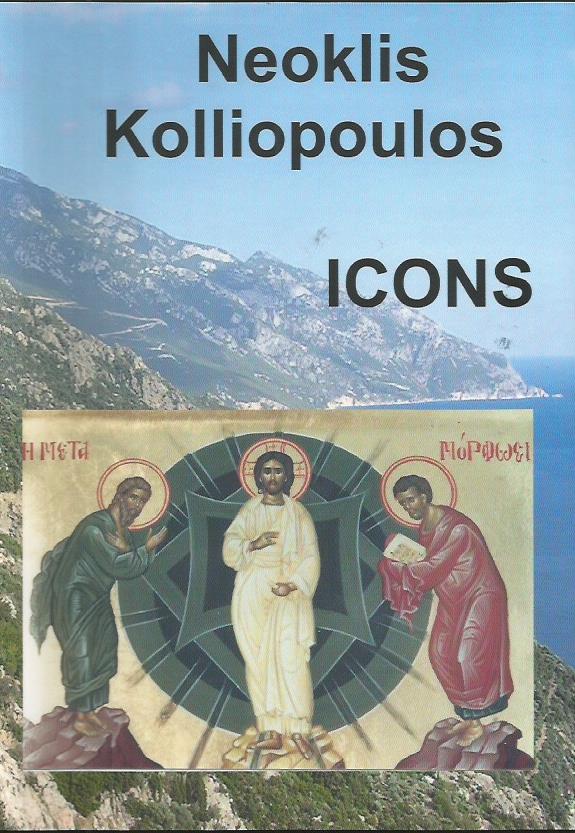Neoklis Kolliopoulos
Icons
Booklet of 24 pages in color in A5 size featuring the icons of Neoklis Kolliopoulos. Soft cover.
Available by transferring €23 (excluding shipping to your country, get the amount consulting me) to the account of J.Verdonk, IBAN number NL72 INGB 0007 1520 86, BIC INGBNL2A, statingin the "notices" Neoklis Icons and your full address details.

Neoklis' style of painting is classical from the beginning (1987), in the sense of complete fidelity to the Cretan School. His brushstroke shows extreme control. He is a textbook example of how Cretan icons (1450-1650) should be repainted.
Neoklis stands at the beginning of the rediscovery by Greek icon painters of the Cretan school. Before this, there was a teacher at the Academy of Athens around 1950, Fotis Kondoglou, who went to Athos for research, and came across some very beautiful icons in depots, and thought: that's just painting! Then he found out that it was the Cretan school, which was no longer considered beautiful. So he started painting in that style at the academy, he wrote the standard painting book, Ekfrasis (1960), and reintroduced the new style in his own way however, naively! By 1970 there already are sparse painters influenced by Kondoglou, including the team of students with whom he started painting churches.
And Neoklis started painting icons in that style in 1987, then he was one of the first (maybe 5 in all of Athens) to seriously get close to the great Cretans. In 1990 I met Neoklis and he taught me. It was not clear then that this would become the style then. Neoklis could only tell, this is the best you can do, you really have to do this. And 10 years later he said: Well everybody is painting Cretan. So it's been a huge revival, a revival. And we ourselves have witnessed that change. We have seen it change before our eyes. And the nice thing is, we are all in that new style together: the students from our school and 10,000 Greeks!
 English
English Ελληνικά
Ελληνικά